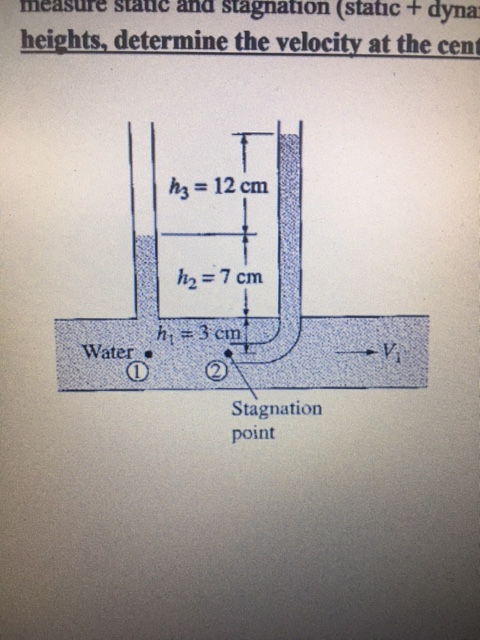

The measured dynamic pressure then corresponds to the speed of the object relative to the fluid. The flow speed is to be considered relative, because one can also move an object through a resting fluid. Since the dynamic pressure is directly linked to the kinetic energy and thus the flow velocity, the flow velocity can be deduced by measuring the dynamic pressure. Figure: Stagnation point and stagnation pressure on the airfoil of an aircraft On a microscopic level, the accumulation of fluid particles in the stagnation point is thus only of short duration. In practice, due to Brownian motion, the fluid particles will sooner or later diffuse out of the stagnation point and be accelerated around the object again. Graphically, the stagnation point is located where a streamline hits the surface of the object perpendicularly and is thus (theoretically) completely slowed down. The total pressure (= static pressure of the flow + dynamic pressure of the flow) that results when a fluid is decelerated to a standstill at a so-called stagnation point is also known as stagnation pressure! The point at which the fluid comes to a standstill on an object is called stagnation point. The measured total pressure when the fluid is stagnating on an object is referred to as stagnation pressure. This process is associated with an increase in pressure, as the dynamic pressure (linked to the kinetic energy) is converted into static pressure. If a flow hits a plate or other object, the fluid is obviously slowed down.


1 Stagnation pressure and stagnation point.It is used to measure airspeed, altitude, and vertical speed. The Pitot-static tube is an aircraft instrument that combines a pitot tube and a static port. It works by measuring the difference in pressure between the entrance and exit of the tube. This information is used to calculate altitude and atmospheric density.Ī Pitot tube is a pressure-sensing device that is most commonly used to measure fluid velocity in a pipe or vessel. Static pressure is the pressure of the air at rest. Airspeed is calculated by measuring the difference in air pressure between the inside and outside of the tube.Ī P itot-static tube is a type of pitot tube that also measures static pressure. The pitot tube is a metal pipe that sticks out from the side of the aircraft, and it has a small opening on the front end. The airspeed is calculated from the differential pressure between these two ports.Ī P itot tube is a pressure-sensing device used to measure the airspeed of an aircraft. The pitot-static tube contains both a pitot head and a static port. This total pressure is the sum of the static pressure and the dynamic pressure.Ī P itot-static tube, also known as an airspeed probe, is an instrument used to measure airspeed. Dynamic air pressure fluctuates with altitude because it depends on whether atmospheric density exceeds or falls below sea-level density.Ī Pitot tube is a pressure measuring device that measures the total pressure in a fluid system.

It combines a pitot tube, which measures the stagnation pressure of the fluid, and a static tube, The two pressures are then used to calculate the dynamic pressure of the fluid. It measures the pressure difference between static pressure and dynamic air pressure. The pitot tube also can measure acceleration under pressures that vary with altitude or flying straight and level.Ī P itot-static tube is a pressure measuring instrument used in fluid dynamics and aerodynamics. It reacts instantaneously to predetermined pressure changes, which are then displayed as a function of time. Difference Between Pitot Tube And Pitot-Static Tube:Ī pitot tube is usually used for measuring fluid flow in non-moving bodies of liquids. What is Pitot tube?Ī Pitot Tube is a device used to measure fluid flow, used in such as an aircraft. Difference Between Pitot Tube And Pitot-Static Tube What is Pitot-static tube?Ī Pitot-static tube is a pressure measuring instrument used in fluid dynamics and aerodynamics.


 0 kommentar(er)
0 kommentar(er)
